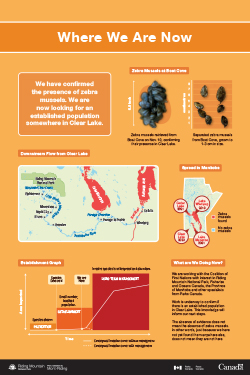
Zebra Mussel Information and Updates
Riding Mountain National Park
September 24, 2024 Update
Multiple Zebra Mussels Confirmed in Clear Lake
Parks Canada staff have recently found multiple living juvenile zebra mussels in Clear Lake. Thank you for your continued patience and understanding while staff and partners assess the current situation. While the discovery of multiple zebra mussels is disappointing to all, the work to mitigate the ecological impacts of a potential large-scale infestation continues. Information bulletin
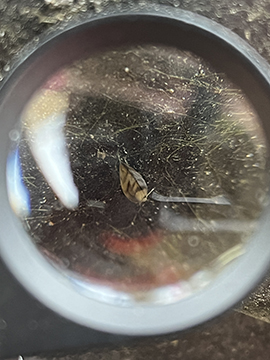
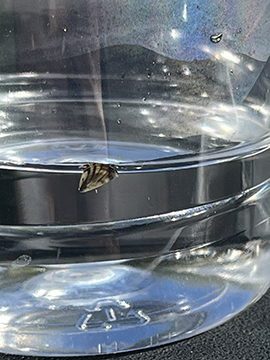
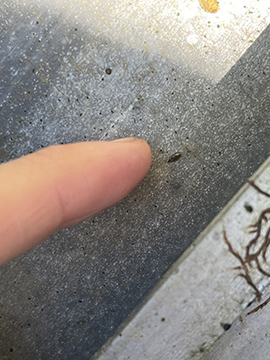
Aquatic Invasive Species Prevention Program - Inspection Schedule
Timeline
- Summer 2011 – Monitoring for zebra mussels in Clear Lake begins.
- Summer 2015 – Mandatory Parks Canada AIS inspections and decontaminations begin at Riding Mountain National Park.
- Summer 2011 to 2023 – Water samples from Clear Lake and surrounding water bodies are taken and tested for zebra mussel eDNA.
- January 2023 – Parks Canada is informed by Fisheries and Oceans Canada of a positive test result for zebra mussel eDNA in a water sample taken at an area known as Boat Cove, in Clear Lake on August 4, 2022.
- February 2023 – Parks Canada implements an unprecedented winter zebra mussel eDNA monitoring program in the area to search for further evidence. No more samples tested positive.
- May 4, 2023 – Parks Canada announced that trailered watercraft intended for use on Clear Lake must not have been in any other waterbody in 2023 and must undergo an inspection by June 15. Boats that met the requirements had a tag installed that sealed the boat to the trailer. This tag ensured that the watercraft had not been in another waterbody and posed no risk of bringing in aquatic invasive species. If this tag was removed or tampered with, the boat would not be allowed to launch in Clear Lake for the remainder of the 2023 season. All human-propelled vessels (canoes, kayaks, stand-up paddle boards) were required to undergo a Parks Canada AIS inspection, and if needed, decontamination before launching in park waters.
- November 2023 – Parks Canada is informed by Fisheries and Oceans Canada of multiple water sample tests indicating positive results for zebra mussel eDNA throughout the summer near Boat Cove, in Clear Lake.
- November 10, 2023 – Parks Canada officials do a physical search Boat Cove and a clump of 48 live zebra mussels was found and removed from the water. Before that, zebra mussels had never been found in Riding Mountain National Park. The discovery was subsequently communicated to the public.
- December 2023 – Parks Canada holds open house public forums in Onanole and Brandon to discuss the situation, provide information, and gather input. An online session was held in January 2024.
- January 2024 – Parks Canada began collecting water samples from various locations throughout Clear Lake to locate zebra mussels at any life stage with members of Keeseekoowenin Ojibway First Nation, the Province of Manitoba’s Aquatic Invasive Species Unit, and Fisheries and Oceans Canada. On-ice water sampling was prioritized based on areas where the mussels are most likely to colonize first, such as access points like boat launches and recreational beaches.
The map below shows Clear Lake broken down into 219 sections. Water samples were taken from sections based on priority.

- February 2024 – The first set of water samples collected from Clear Lake between January 8 and February 2, 2024, tested negative for zebra mussel environmental DNA (eDNA).
- March 2024 –The second set of water samples collected from Clear Lake between February 2 and February 20, 2024, tested negative for zebra mussel environmental DNA (eDNA). All high-priority sections have been tested.
- April 2024 – On-ice water sampling for zebra mussel environmental DNA (eDNA) from Clear Lake ended on April 5, 2024, due to melting ice conditions. All test results from water samples taken throughout the winter of 2024 have been negative. Zebra mussels may be present despite negative eDNA results. In cold water, zebra mussels are less metabolically active and are much less likely to shed eDNA.
-
May 2024
Effective immediately, and for the time required to determine if a population of zebra mussels has been established in Clear Lake and for any potential remediation during the 2024 open water season only, personal watercraft will not be allowed on Clear Lake. This includes motorized boats and human-powered vessels such as canoes, kayaks, and stand-up paddle boards. This decision is informed by the best available science and Indigenous Knowledge and provides the best opportunity to battle a likely invasion of zebra mussels. The goal is to confirm whether an established colony of invasive mussels is present in Clear Lake and assess whether eradication is feasible. Personal watercraft complicate detection efforts, increase the risk of spread within the lake and to other waterbodies, interfere with water sampling, and prolong the search. Parks Canada will continue to work with members of the Keeseekoowenin Ojibway First Nation, Clear Lake Marina, the Province of Manitoba’s Aquatic Invasive Species Unit, and Fisheries and Oceans Canada to conduct zebra mussel monitoring efforts over the coming months. -
June 2024
Monitoring and Sampling Update
As of June 10, 2024, 26 water samples taken from high-priority areas in Clear Lake have tested negative for zebra mussel environmental DNA (eDNA). Currently, areas of focus are near Boat Cove and the area around the pier and the Clear Lake Marina. Water samples continue to be analyzed in Winnipeg by Fisheries and Oceans Canada on a priority basis. The likelihood of detecting zebra mussels increases as the water temperature warms.
On June 3, a Fisheries and Oceans Canada dive team completed visual surveys of the main pier, Clear Lake Marina, and the shoreline extending from the main pier to the Boat Cove.
So far, no zebra mussels have been found.
Containment Curtain Installation
Considering multiple positive tests for zebra mussel environmental DNA (eDNA) in Boat Cove throughout the summer of 2023, and the collection of live adult zebra mussels in the same area in November 2023, precautionary measures are being taken to contain and isolate the potential spread of zebra mussels in Clear Lake.
Within the next few weeks, containment curtains will be installed around Boat Cove and on the pier at Main Beach. These curtains are made of the same materials required for silt curtains (material that catches or stops sediment) used in many construction projects. The containment curtains installed in Clear Lake will increase the likelihood of zebra mussel detection by stopping lake currents and wind-generated flows.
If further evidence of zebra mussels (veligers, positive eDNA samples, living mussels) is found outside of the initial containment area, the curtains may be moved to that location.
Visitors can still enjoy swimming within the area contained by the curtains. The water within the contained area is the same as water outside the curtains. The curtains will likely be in place for the 2024 open water season.
Zebra Mussel Treatment
Parks Canada staff and partners are monitoring for the presence of an established colony of zebra mussels using multiple detection methods. If further evidence of zebra mussels is found in the containment area (veligers, positive eDNA samples, living mussels), and monitoring results from the remaining portion of the lake are negative, a treatment option using potash molluscicide may be considered. If no further evidence of zebra mussels is found, treatment may not be required.
If zebra mussels are detected, and a potash molluscicide treatment is feasible, it will be widely communicated.
If zebra mussels are detected, the containment curtains will be used to isolate the area. Then, if feasible, it will allow for the effective treatment of zebra mussels using potash molluscicide. Successful containment is essential for effective treatment while preserving the water quality and overall ecological integrity of Clear Lake.
Health Canada considers open-water potash applications at concentrations needed to kill zebra mussels safe for swimming.
-
July 2024
Parks Canada has closed the Boat Cove area (see map 1) for the construction and installation of an impermeable containment curtain in Clear Lake, as described in the July 19, 2024. Information Bulletin
This closure includes:
- 200 metres of the Clear Lake South Shore Trail from Boat Cove to the intersection with the South Lake East Trail;
- Boat Cove parking area, including shoreline; and
- All water (surface to bottom) and shoreline extending from the western edge of Boat Cove to the end of the pier (see map 1).
The containment curtain will be placed from Boat Cove to the Pier, to isolate the location where the zebra mussel was found last week and where water samples tested positive for eDNA.
The Temporary watercraft management measures for Clear Lake remain in place. A Restricted activities - Boat Cove Area Closure is now in effect.
The ecology of Clear Lake is a top priority for Parks Canada, and staff remain committed to working with members of the Keeseekoowenin Ojibway First Nation and others to safeguard the long-term health of the waters of Clear Lake.
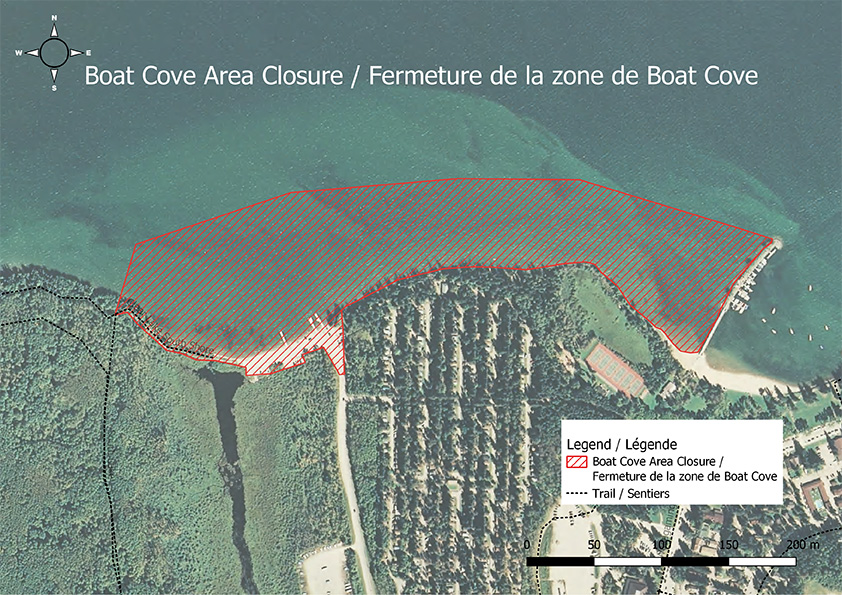
Map 1 July 19
Parks Canada has found an adult zebra mussel near Boat Cove, in Clear Lake, in Riding Mountain National Park. On July 17, 2024, while conducting a visual survey, Parks Canada snorkellers found one partial shell and one living, adult sized zebra mussel attached to a rock. Water samples collected from Boat Cove from June 19-27, 2024, have also tested positive for environmental DNA from zebra mussels. This evidence shows zebra mussels are building a presence in Clear Lake. more
-
August 2024
Boat Cove Area Closure
Where:
- All land adjacent to the north edge of Clear Lake South Shore trail for 300m west of Boat Cove
- Boat Cove parking area and shoreline, excluding trail access corridor on south end.
- All water (surface to bottom) 20 meters around containment curtain and containment curtain itself.
- All containment curtain anchor points
- All water (surface to bottom) and shoreline extending from the western edge of Boat Cove to the end of the pier.
Why:
For safety, risk of entanglement to swimmers. For containment and potential treatment of aquatic invasive species.
- September 2024 – Zebra mussel containment curtain being removed
The containment curtain installed in Clear Lake at Riding Mountain National Park in early August will be removed. The curtain isolated an area of the lake where living zebra mussels were found in November 2023 and July 2024. The curtain was damaged and is no longer an effective means of containment and cannot be repaired or replaced this fall. The private contractor that provided and installed the curtain will be responsible for its removal. More
Zebra mussels
Zebra mussels (Dreissena polymorpha) are native to eastern Europe. They were first detected in North America in the Great Lakes in the mid-1980s. Since then, they have infested many waterbodies in eastern North America. They were first detected in Manitoba in 2013 when they were discovered in the south basin of Lake Winnipeg. They later also colonized the Red River from the US border to Lake Winnipeg. Since then, they have invaded the Nelson River from Lake Winnipeg to Hudson Bay, as well as Cedar Lake and Lake Manitoba.
Biology
Zebra mussels are freshwater hinged mollusks. They are filter feeders that attach themselves to solid surfaces. They breed very quickly, as females can release up to one million eggs each breeding season. After the eggs are fertilized, larvae (called veligers) emerge and are free-floating for up to a month. The larvae are microscopic and do not swim. Veligers float through lake and river currents until they settle on a solid surface. This natural dispersal method means they can easily affect waterways downstream from an invaded area. Zebra mussels have few, if any, natural predators in North America. As a result, they often permanently alter the food web and ecosystems they invade.
Negative impacts on people include:
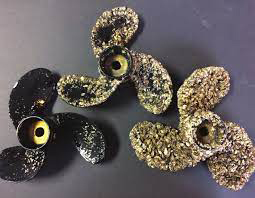
- Increased maintenance costs
- Damage to equipment such as boats, hydro-electric generating facilities, water intakes, and other infrastructure along infested water bodies
- Injury from sharp shells
- Potential negative health impacts resulting from increased likelihood of toxic algae blooms
- Beach closures
Negative impacts on aquatic ecosystems:
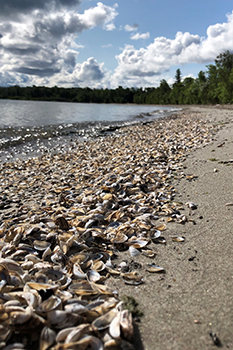
- Altering the food web by out-competing native species, like native mussels and other small invertebrates, for food (plankton)
- Removing large amounts of non-toxic algae (plankton) from the water and leaving behind toxic algae (cyanobacteria) to thrive, causing toxic algae blooms
- Affecting fish spawning areas by changing the surfaces of rocks and vegetation, impacting the survival of fish eggs
- Creating clearer water, allowing sunlight to penetrate deeper and changing the habitat by increasing the growth of submerged aquatic vegetation
Zebra mussels are especially harmful to native mussels, many of which are species at risk. They outcompete these species for food and will attach themselves to native mussels, suffocating them.
An infestation of zebra mussels in Clear Lake presents a real threat of significant and irreversible damage to the lake and downstream waterbodies.
Discovery of zebra mussels in Clear Lake
Positive eDNA Samples

The results of testing completed in the summer of 2023, indicated the presence of environmental DNA (eDNA) for zebra mussels throughout the season, prompting the physical search at the Boat Cove. In November 2023, a clump of living mussels was removed from Clear Lake in Riding Mountain National Park. The search for further evidence of their presence somewhere else in Clear Lake began.
Winter Monitoring and Sampling
Over the winter, water samples were collected from Clear Lake and tested for zebra mussel environmental DNA (eDNA) at the Freshwater Institute operated by Fisheries and Oceans Canada in Winnipeg. In cold water, zebra mussels are less metabolically active and are much less likely to shed eDNA; therefore, zebra mussels may be present despite the negative eDNA results from this winter. Positive eDNA samples can give a better idea of where a population might be located.
Clear Lake
Clear Lake is a unique lake for the prairie parkland area. It is oligotrophic, meaning it has low amounts of nutrients in the lake, giving it a clear look and making it a suitable source of clean, fresh drinking water. Clear Lake is a key habitat for 14 fish species, including whitefish, northern pike, white sucker, walleye, and slimy sculpin. Whitefish are the most abundant large-bodied fish in Clear Lake and are usually found in the deeper parts of the lake along with slimy sculpin. Both species are considered ecological indicators of the health of the lake as they require a well-oxygenated lake bottom to survive.
Working Together
Parks Canada staff at Riding Mountain National Park are working with AIS specialists from other Parks Canada administered sites, Members of Keeseekoowenin Ojibway First Nation, the Province of Manitoba’s AIS Unit, and Fisheries and Oceans Canada. The Keeseekoowenin Ojibway First Nation (KOFN) maintains authority and control of fishing station IR 61A on the northwest shores of Clear Lake.
The likelihood of success for any potential eradication action will depend on whether an intervention can happen before significant reproduction and spreading occurs within the lake. Determining with relatively high confidence where they exist in the lake would help to inform potential eradication options.
Terms to Know
Ecological Integrity: An ecosystem has ecological integrity when:
- It has the living and non-living components expected in its natural region.
- It's processes (the engines that make an ecosystem work, e.g. fire, flooding, predation) occur with the frequency and intensity expected in its natural region.
Ecological integrity is an important priority in all aspects of managing a national park. Parks Canada runs an ecological integrity monitoring program across all parks. This involves taking an inventory of what is found at each park and monitoring how it is doing. Monitoring and reporting on the ecological integrity of parks allows Parks Canada, in collaboration with partners, to make informed decisions about protected areas, and to inform Canadians and other audiences.
eDNA: DNA is the genetic material found in humans and most other living things. DNA can be released by organisms into the environment from sources such as feces, mucus, skin cells, hair, etc. This is known as environmental DNA (eDNA). Scientists can collect samples from the environment to see what DNA is there. Riding Mountain National Park does this with water samples collected from lakes to test for DNA from zebra mussels.
Questions and Answers
Zebra mussels
Do zebra mussels help by cleaning dirty water?
Zebra mussels can filtre 1 litre of water per day, consuming plankton, and small organisms that native species rely on. Zebra mussels can have significant negative impacts on freshwater habitats by out-competing native species for food. When found in high densities, the mussels can have strong impacts on algae, which are the base of the food web. The plankton is filtered and ingested, but toxic algae is not consumed, allowing it to accumulate to dangerous levels.
What’s the point of limiting watercraft on the lake? Won't migrating waterfowl spread AIS anyway?
No. The “gizzard” or digestive tract of birds destroys zebra mussels, therefore there is no risk of spreading zebra mussels through bird droppings. Wildlife living near waterbodies, such as waterfowl, do not stay still long enough for a zebra mussel veliger to secure itself.
Parks Canada is acting now, to manage things that are within our control, to ensure that the ecological integrity of the park’s aquatic communities, and those of downstream waterbodies remains intact.
Can zebra mussels swim?
Mussels cannot swim freely at any point in their lifecycle. During the larval phase, the zebra mussel larva (veliger) free-float in the water until it attaches to an object. That larvae will develop a shell and tendrils that secure the mussel in place. Clams, on the other hand, can swim using a foot-like appendage.
For more information contact: comms-riding@pc.gc.ca
Information:
- Date modified :
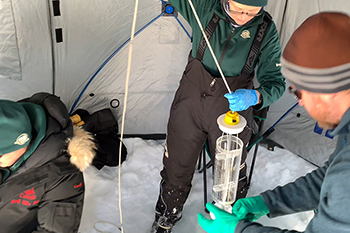
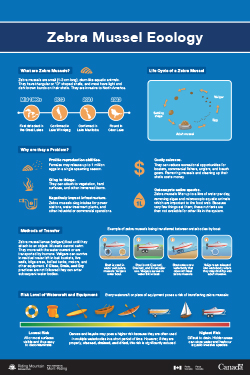
 579 KB
579 KB
